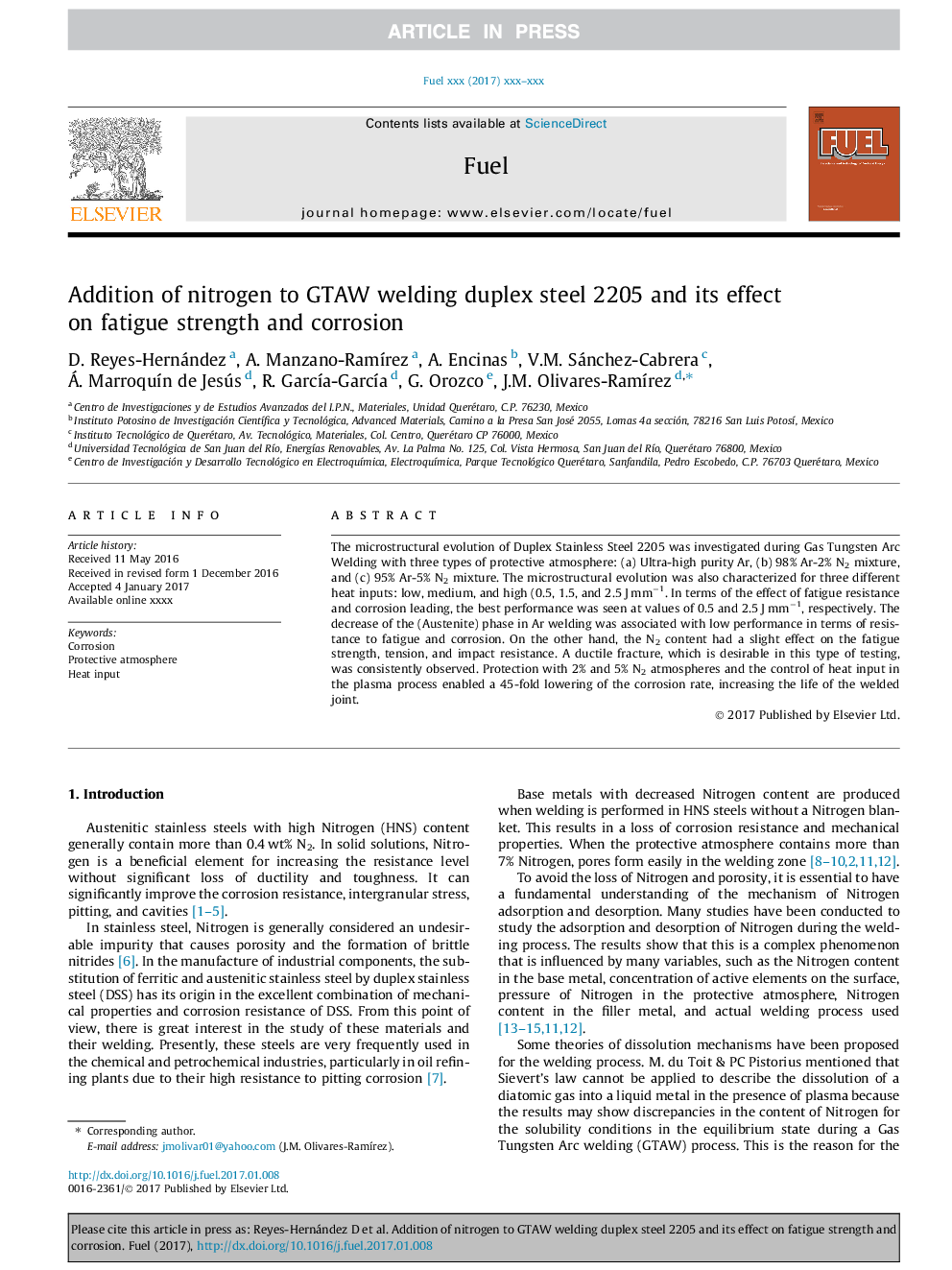| Article ID | Journal | Published Year | Pages | File Type |
|---|---|---|---|---|
| 4768692 | Fuel | 2017 | 5 Pages |
Abstract
The microstructural evolution of Duplex Stainless Steel 2205 was investigated during Gas Tungsten Arc Welding with three types of protective atmosphere: (a) Ultra-high purity Ar, (b) 98% Ar-2% N2 mixture, and (c) 95% Ar-5% N2 mixture. The microstructural evolution was also characterized for three different heat inputs: low, medium, and high (0.5, 1.5, and 2.5Â JÂ mmâ1. In terms of the effect of fatigue resistance and corrosion leading, the best performance was seen at values of 0.5 and 2.5Â JÂ mmâ1, respectively. The decrease of the (Austenite) phase in Ar welding was associated with low performance in terms of resistance to fatigue and corrosion. On the other hand, the N2 content had a slight effect on the fatigue strength, tension, and impact resistance. A ductile fracture, which is desirable in this type of testing, was consistently observed. Protection with 2% and 5% N2 atmospheres and the control of heat input in the plasma process enabled a 45-fold lowering of the corrosion rate, increasing the life of the welded joint.
Related Topics
Physical Sciences and Engineering
Chemical Engineering
Chemical Engineering (General)
Authors
D. Reyes-Hernández, A. Manzano-RamÃrez, A. Encinas, V.M. Sánchez-Cabrera, Á. MarroquÃn de Jesús, R. GarcÃa-GarcÃa, G. Orozco, J.M. Olivares-RamÃrez,
